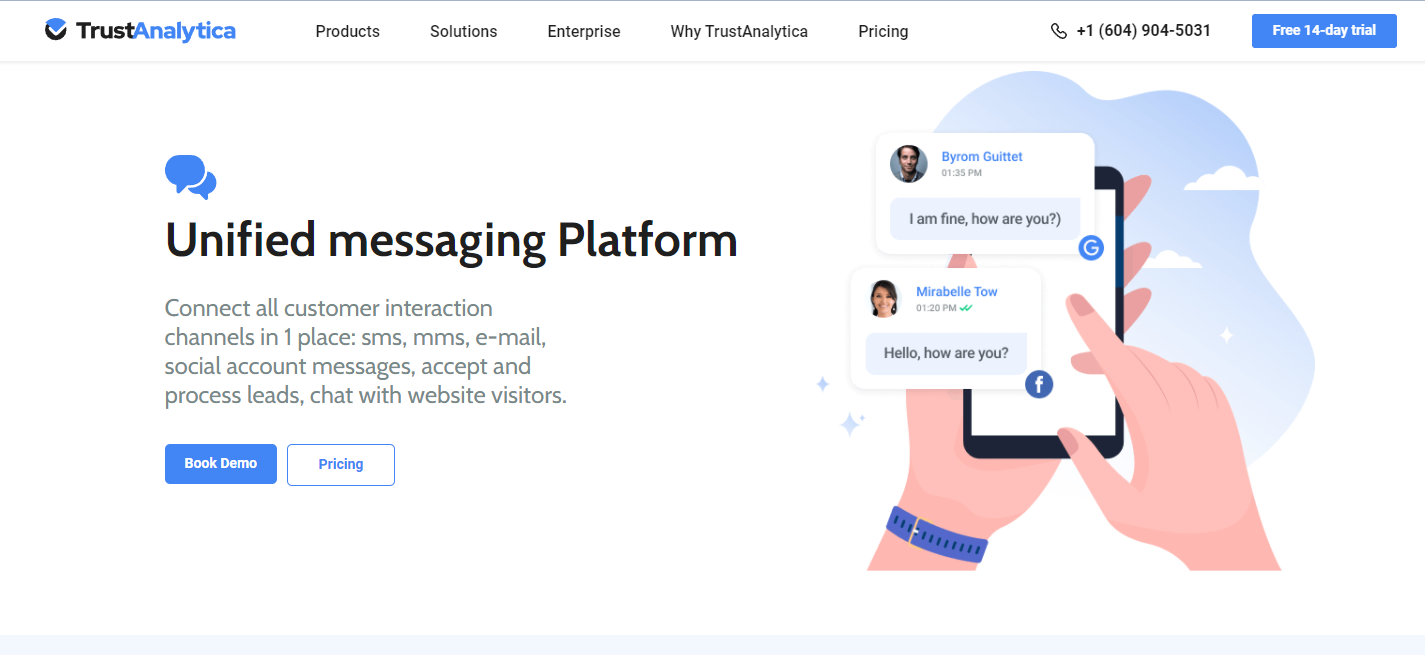Updated: 30th November, 2023 Even if you have never heard about unified messaging or unified communications (UC) you are probably already familiar with the concept and might even have used it without knowing what it’s called. You have already benefited from unified messaging, but in what way? If you have answered emails that were related […]

Updated: 30th November, 2023
Even if you have never heard about unified messaging or unified communications (UC) you are probably already familiar with the concept and might even have used it without knowing what it’s called. You have already benefited from unified messaging, but in what way? If you have answered emails that were related to work from outside office space and responded to voicemails via texts, well that all has been made possible with unified communications.
Nowadays we are completely surrounded by technology and innovations. If you don’t know how to name some new technology then that doesn’t mean that you are not being influenced by the new technology.
In this article, we will discuss what actually is unified messaging and what is all the fuss about this new innovation.
Combining and integrating different media communications (emails, text messages, MMS, SMS, voicemails, video messages, webchats) into one platform is called unified messaging. The system not only receives messages but also helps you respond to all the voice chats, text messages, and emails through a single unified platform.
Before unified messaging existed all the different platforms only worked on different frameworks. The end-user needed to access each platform separately and then receive and respond to messages. However, now as technology has advanced business owners can now receive and respond to all online communications through unified messaging. This helps business owners respond to customer queries in real time without requiring a person to see and respond to these queries, thus saving time and money.

Unified Messaging platforms are made through a collection of different products and platforms that can be customized to suit an organization’s needs. These customized solutions are made possible through a combination of many existing and custom components. Unified messaging works by redirecting all communication from different platforms to a single platform that is very easy to manage.
Unified Messaging utilizes a combination of technologies to bring together various communication channels. Here’s a breakdown of the key components and their functionality:
Unified Messaging integrates email functionality, allowing users to receive, send, and manage emails from multiple accounts within a unified inbox. This eliminates the need to switch between different email clients or platforms.
Unified Messaging integrates voicemail systems, converting voice messages into digitized formats that can be accessed and managed via email, web portals, or mobile applications. Users can listen to voicemails, read transcriptions, and even forward them to other recipients.
Unified Messaging incorporates instant messaging platforms, enabling users to engage in real-time text-based conversations within the unified interface. This fosters quick and efficient communication, particularly for internal team collaboration.
Unified Messaging integrates fax capabilities, allowing users to send and receive faxes digitally. Incoming faxes are converted into PDF or other readable formats and delivered to users’ inboxes, eliminating the need for physical fax machines.
Unified Messaging often employs speech recognition technology to convert voice messages into text format. Similarly, text-to-speech technology is used to convert text-based messages, such as emails or instant messages, into audible formats.
The unified Messaging feature was first introduced by Microsoft Exchange Server back in 2007. The basic functionality of this feature was to provide voice mails, emails, and texts through a single platform. If both the sender and receiver had a unified messaging feature enabled then the exchange server made it easy for both users to send and receive messages through the same platform.
The basic philosophy behind unified messaging was that users communicate using many different platforms and there should be a platform that should be able to integrate all these communications into a single platform.
Microsoft designed this application to basically allow all users to store and access emails, voicemails, and fax messages through one platform. This application also enabled users to search for messages making them more accessible to everyone.
Once the user downloads and logs in to the Unified Communications application the VoIP (Voice over Internet Protocol) technology enables real-time communications from anywhere and anytime. Modern unified communications are much more advanced and complex that the ones that are. Modern unified messaging platforms not only integrate emails and voice mails but also give users access to all social media and internet communications through a single platform.
To use unified messaging you don’t need to invest in any hardware at all, you just need your laptop, desktop, or mobile device with an internet connection. You and all your employees can access the unified messaging platform without investing in any hardware other than a smartphone device.
The official Unified Communications Strategies Website put forward the following agenda in 2006, “Communications that are integrated to Optimize Business Processes”. According to this agenda, modern unified messaging platforms have their main focus on streamlining messaging and communication between clients and businesses. It’s a very broad term, but it’s not really a new form of communication. It’s a way to combine older forms of communication to get better, more efficient results.
UC is evolving every day with new features being introduced and added with each passing day. Businesses nowadays should adapt to this technology as soon as they can as it is one of the most important steps toward building a good online reputation.

To call a system a unified messaging system, it must fulfill the following criteria:

Unified communications aim to close the gap between online businesses and users. The 5 most important benefits of using unified messaging include the following:

TrustAnalytica is by far the cheapest and most reliable unified messaging software that seamlessly integrates all customer interaction channels into one easy-to-use platform. Thanks to this ultra-modern platform business owners can now manage all business communications in a hassle-free way.
TrustAnylitca is by far the best overall reputation management platform that makes it easy for business owners to manage all Emails, SMS, MMS, social media communications, and web chats all in one place.
Thanks to the best online reputation management software of 2022 now every business owner can manage their E-mail, SMS, MMS, social media messages, google messages, webchats, accept and process leads, and chat with website visitors all in one place.
Remember to book your free trial for TrustAnalytica and go to their billing section to find out more about this amazing unified messaging system.
 How to improve online reputation for Home cleaning: Guide
How to improve online reputation for Home cleaning: Guide  Why Online Reviews Are Important For Customers & Businesses
Why Online Reviews Are Important For Customers & Businesses 
